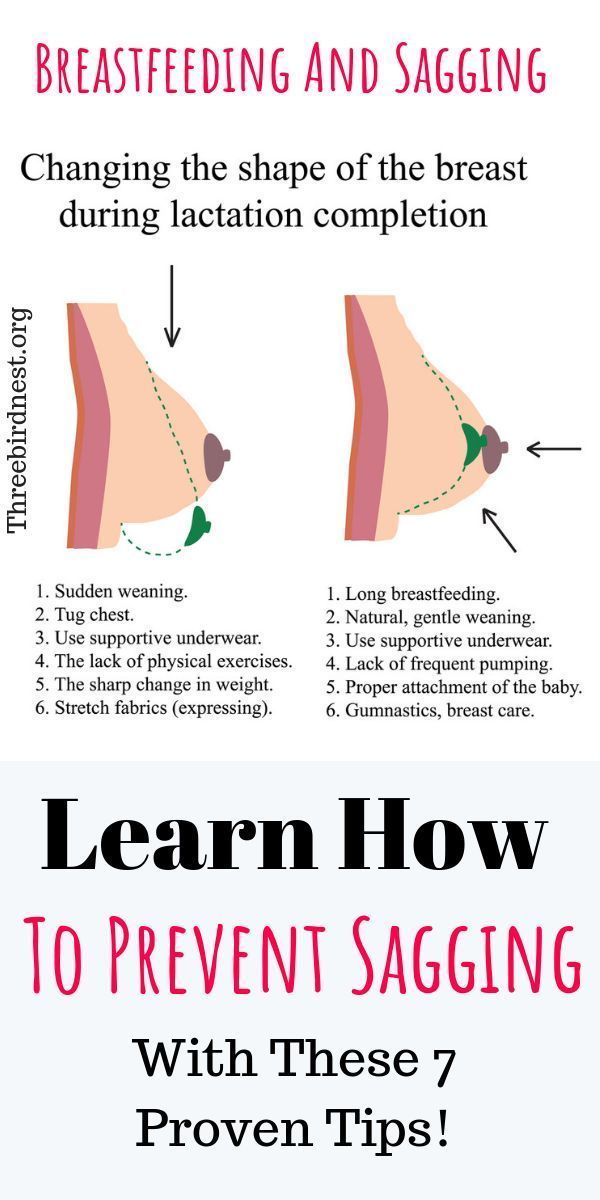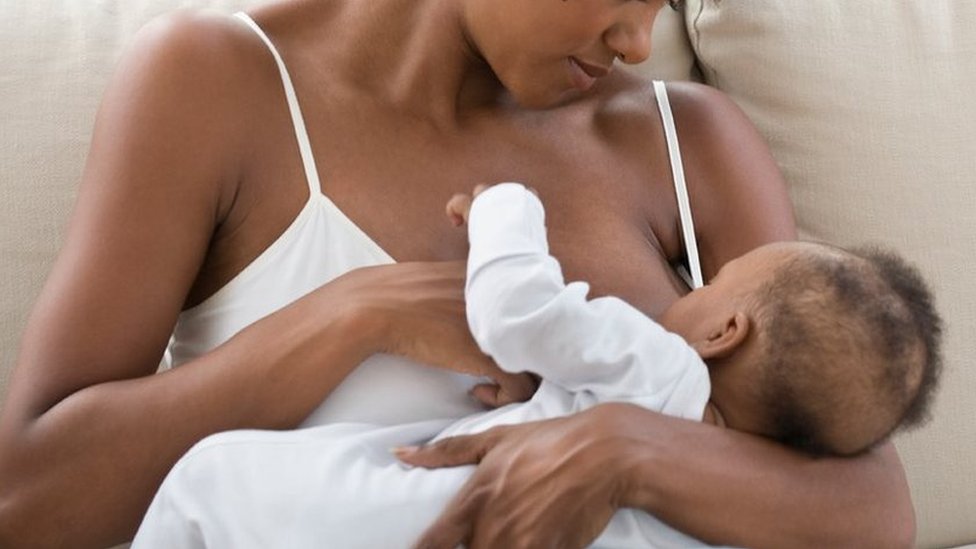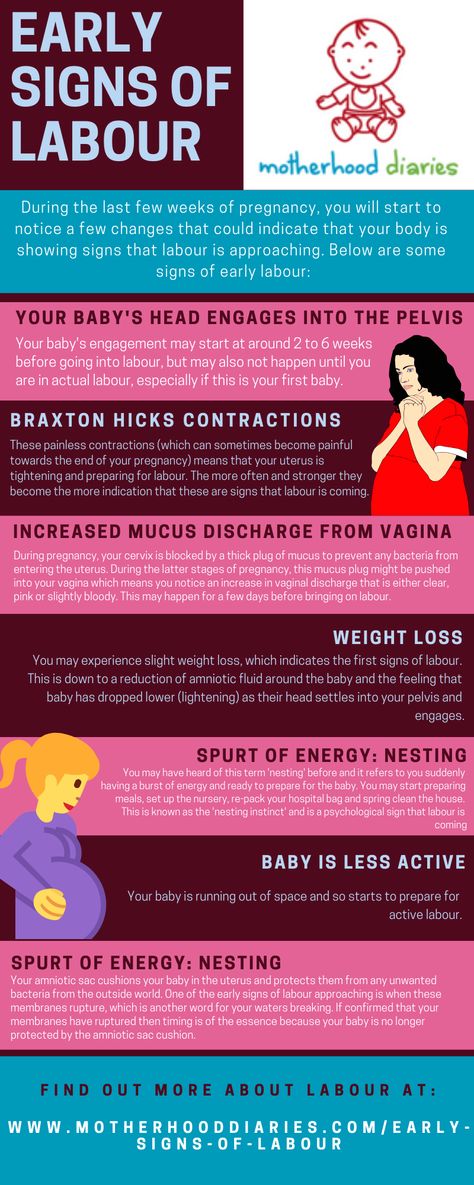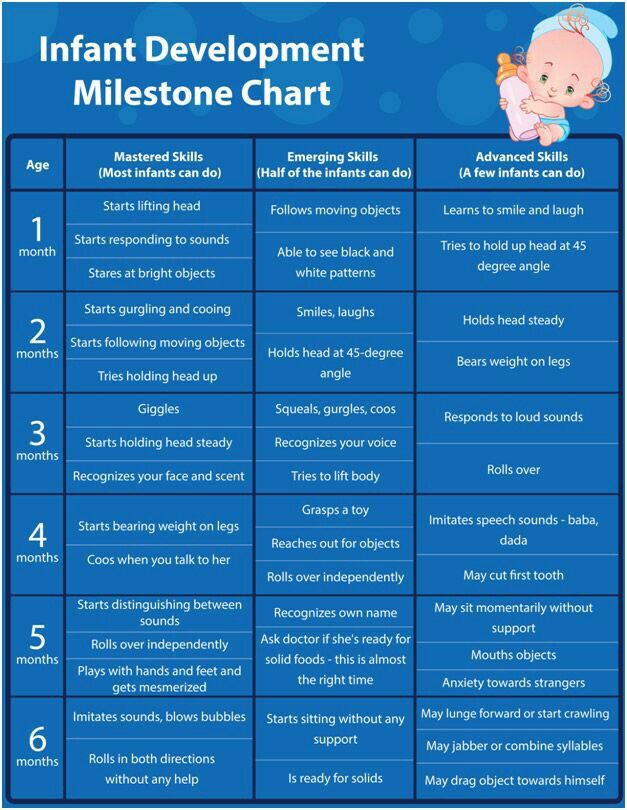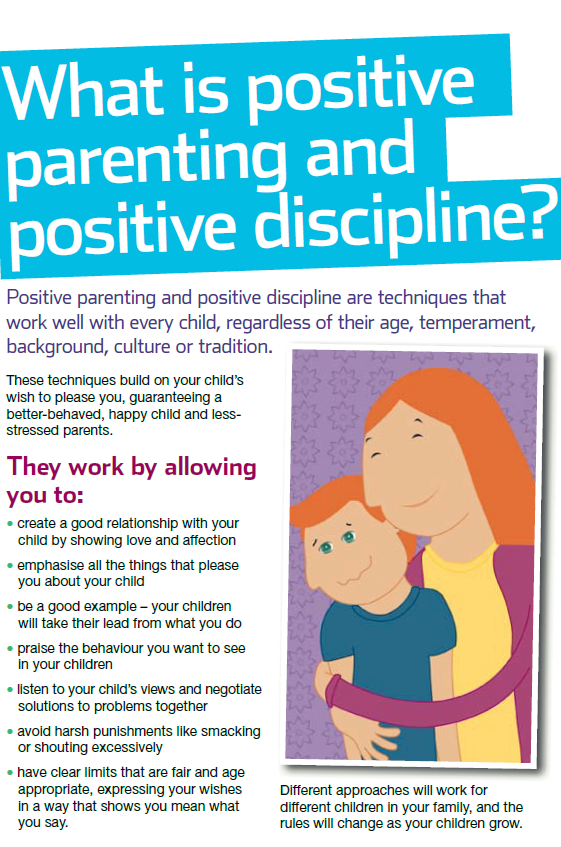Bleeding breast during breastfeeding
Blood in Breast Milk: Is This Normal?
If you choose to breast-feed your baby, you might expect a few bumps in the road. You may know about the possibility of breast engorgement where your breasts overfill with milk, and you may be aware of latching problems. These problems can be bothersome, but they may not be as alarming as finding blood in your breast milk.
Some breast-feeding mothers panic and think there’s a serious medical problem after seeing blood in their milk supply. But finding blood in your breast milk doesn’t always indicate a serious problem.
In fact, this is common in first-time breast-feeding moms. Spots of blood may appear in your pumped milk, or your baby may have a small amount of blood in the mouth after breast-feeding.
You probably don’t need to stop breast-feeding your baby or see your doctor. But it does help to recognize common causes for blood in breast milk.
1. Cracked nipples
Cracked nipples can be a side effect of breast-feeding. In a perfect world, babies latch onto nipples effortlessly and breast-feeding doesn’t have complications. But unfortunately, breast-feeding can be difficult for mom and baby. If your baby doesn’t latch on properly, this can irritate your breasts and cause cracking and pain. Bleeding is a result of this cracking.
Breast-feeding isn’t supposed to be uncomfortable. If you have cracked nipples, changing your baby’s position can make latching easier. If this doesn’t help, another option is consulting a lactation consultant for support. These professionals can teach you how to breast-feed and help resolve common breast-feeding problems. Your nipples will begin to heal once you’ve fixed latching issues.
Here are tips to ease discomfort and pain while nipple cracking heals:
- breast-feed from a breast that isn’t sore or tender
- take a pain reliever such as acetaminophen
- apply a cool or warm compress to your nipples after breast-feeding
- don’t wait until your baby is overly hungry to feed (it can cause your baby to feed more aggressively)
- wear a breast shell inside your bra to protect your nipples
- apply purified lanolin to nipples after each feeding
2.
 Vascular engorgement
Vascular engorgementBlood in your breast milk can also be caused by rusty pipe syndrome, or vascular engorgement. This results from an increase in blood flow to the breasts shortly after giving birth. Your first milk or colostrum may have a rusty, orange, or pinkish color.
There is no specific treatment for vascular engorgement. The bleeding usually disappears within a week of giving birth.
3. Broken capillaries
Your breasts have small blood vessels. Sometimes, these blood vessels break due to an injury or trauma. If you’re expressing breast milk, either by hand or a breast pump, be gentle. Expressing is a way to remove milk from your breasts without breast-feeding.
If using your hands for expressing, cup your breasts with one hand and gently squeeze to release the milk. Only squeeze your breast, not your nipple. You can express into a bottle to empty your breasts. If your milk flow stops or slows down, don’t force it. Instead, switch to your other breast.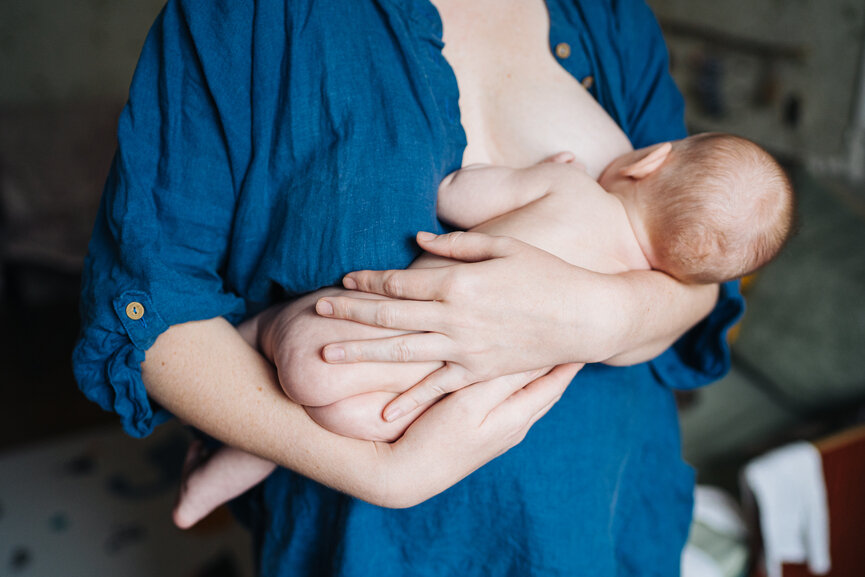 If you’re too rough when handling your breasts and break a blood vessel, blood can leak into your breast milk.
If you’re too rough when handling your breasts and break a blood vessel, blood can leak into your breast milk.
When using a breast pump, follow the instructions and use the breast pump properly to avoid damaging your breasts. Electric pumps allow for the adjustment of speed and suction. Choose a speed and suction that’s comfortable and doesn’t irritate your breast.
4. Benign intraductal papilloma
Sometimes, bleeding is caused by small, benign tumors on the lining of your milk ducts. These growths can bleed and cause blood in your breast milk. If you touch your breasts, you may feel a small growth behind or next to your nipple.
Detecting a lump can be scary, but having a single intraductal papilloma isn’t associated with a higher risk of breast cancer. The risk for cancer increases if you have multiple papillomas.
5. Mastitis
Mastitis is a type of breast infection that can occur while breast-feeding. The condition can cause different symptoms, including:
- swelling
- redness
- breast pain
- fever
- chills
Some women also have nipple discharge with mastitis, and streaks of blood appear in their breast milk. This type of infection is triggered by an accumulation of milk in the breasts. It can develop as a result of missed feedings or improper latching.
This type of infection is triggered by an accumulation of milk in the breasts. It can develop as a result of missed feedings or improper latching.
Mastitis is treatable. Getting plenty of rest and staying hydrated can help improve the condition, as well as taking an over-the-counter pain reliever like acetaminophen to reduce pain and fever.
It’s OK to breast-feed your baby while you wait for the condition to improve. In the meantime, wear loose-fitting clothes to avoid irritating your breasts and nipples. Consult a doctor if your condition doesn’t improve with home treatment. Your doctor may prescribe an antibiotic to clear the infection.
To prevent mastitis, breast-feed your baby more often. You may want to schedule an appointment with a lactation consultant if your baby has trouble latching onto your breasts. You can also reduce mastitis by letting your baby breast-feed until satisfied.
Finding blood in your breast milk can be scary, especially if you’re a first-time breast-feeding mother. But keep in mind that this is a common issue. Most cases of blood in the breast milk are treatable and don’t require medical attention.
But keep in mind that this is a common issue. Most cases of blood in the breast milk are treatable and don’t require medical attention.
If you notice blood while breast-feeding, pumping, or expressing for longer than a week, see a doctor. In rare cases, blood in the breast milk may be a symptom of breast cancer.
It’s usually OK to continue your breast-feeding routine with small amounts of blood in your breast milk. But if you have an illness that can spread to your baby through blood, such as hepatitis C, stop breast-feeding as soon as you spot blood and consult your doctor.
Q:
What are some reasons your doctor might recommend antibiotics for blood in your breast milk?
Anonymous patient
A:
A doctor may recommend antibiotics for blood in breast milk if you experience breast pain and redness along with fevers, chills, body aches, and other flu-like symptoms. These symptoms may signify a more serious infection that will need a 10 to 14 day antibiotic course.
Alana Biggers, MD, MPHAnswers represent the opinions of our medical experts. All content is strictly informational and should not be considered medical advice.
Sore, cracked or bleeding nipples
Sore, cracked or bleeding nipples | Pregnancy Birth and Baby beginning of content4-minute read
Listen
Sore, cracked or bleeding nipples are common. Some mothers have such trouble with them that they stop breastfeeding early.
As a new mother, you may find it could take a few days or weeks to adapt to the strong suck of a healthy baby on your breasts.
It is normal for your breasts to become more sensitive in the first weeks after you have given birth. They may sting, burn, ache or feel tender.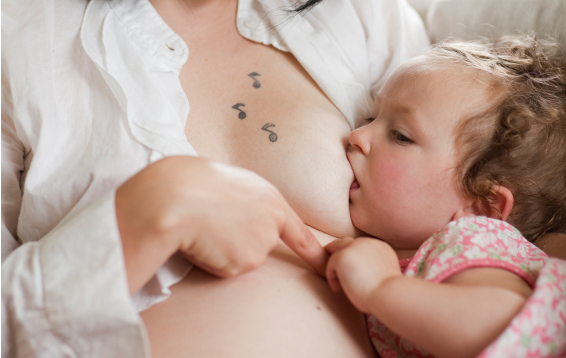 Over time, the discomfort and sensitivity should resolve.
Over time, the discomfort and sensitivity should resolve.
If you have sore nipples, it may be that your baby isn’t attaching properly to your breast. This pain usually lasts about half a minute while baby first draws your nipple into their mouth.
Try to make sure your baby’s mouth is attached correctly for suckling from the very first breastfeed.
If you do not correct your baby’s latch, your nipples could be damaged, which causes problems like mastitis (infections).
How to get baby to attach to your breast correctly
- Make sure you are sitting or lying comfortably. Position your baby’s chest against your chest, with their mouth and nose facing your nipple.
- If you are lying down, let your baby’s cheek rest against your breast. If you are sitting up, lift your breast slightly so it does not press on your baby’s chin.
- Position your baby so the first contact point is their chin on your areola — the coloured area around your nipple.
- Bring your baby’s head to your breast, not the breast to baby’s head.
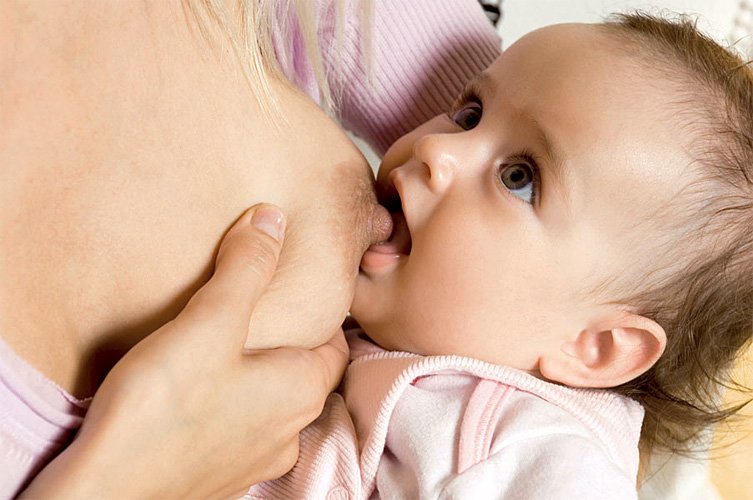 Support your baby to move to where they are trying to go — towards your nipple.
Support your baby to move to where they are trying to go — towards your nipple. - Ensure the nipple and much (or all) of the areola and some surrounding breast are in your baby’s mouth.
After a few rapid gulps, your baby should start to suck and swallow in a regular rhythm. Once you have got the hang of it, breastfeeding can be enjoyable and should not be painful.
How to manage sore nipples
Before putting baby to the breast
Wash your hands and sit in a comfortable position and try to relax. Apply a warm washer to the breast and gently massage or express to help milk flow. Express some milk to soften the areola to lubricate the nipple.
At the breast
Poor attachment is a key cause of sore nipples. Make sure the way your baby latches to your breast is correct. If you are not sure, ask for help from a health professional.
If the attachment feels uncomfortable after 30 seconds, break your baby’s suction by putting your finger in the corner of their mouth.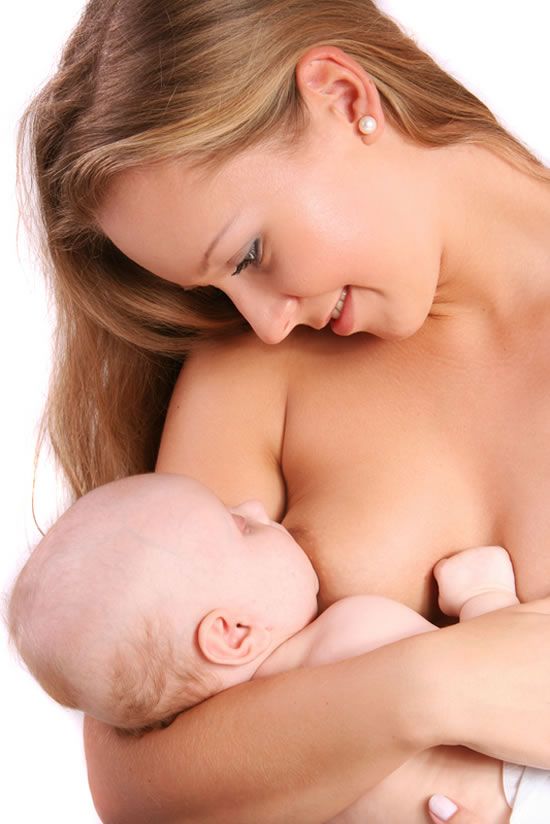 Take your baby off and let them re-latch to your breast. Try different feeding positions. If your nipples are tender, limit your baby’s comfort sucking.
Take your baby off and let them re-latch to your breast. Try different feeding positions. If your nipples are tender, limit your baby’s comfort sucking.
After the breastfeed
Check your nipples for redness and misshapen appearance. Wipe your breasts with clean water and let them dry. It can help to leave your bra off for a while and allow your nipples to air. Make sure your bra fits.
When expressing milk, make sure that the suction on your breast pump is not too strong. If the pain in your nipples increases after the first week, talk to a health professional.
Finding the cause of cracked or bleeding nipples
You will need to work out the source of your nipple problems. The first thing to do is to check if your baby is latching on correctly. You may need to ask a health professional for assistance. They can also check your baby for problems with their lips and tongue and whether you have medical problems like dermatitis or nipple infection. If you use a nipple shield, make sure it is the correct size and if you’re using a breast pump, make sure you’re doing it properly.
How to treat cracked or bleeding nipples
There are a number of things you can do to treat cracked or bleeding nipples.
- Look after your nipples: wash your nipples with water after every feed and clean and sterilise your nipple shield after each feed.
- If you can, continue breastfeeding (it is quite safe for baby to feed on a bleeding nipple). But if it’s too painful, you may need to take your baby off the breast for 24 to 48 hours, rest the nipple and feed your baby expressed breast milk. Gradually reintroduce the breast after resting for a short time and take special care with positioning and attachment.
- If you’re going to take pain-relieving medication, talk to your doctor or pharmacist. Many household remedies are ineffective or harmful.
The Australian Breastfeeding Association has more tips on treating sore or cracked nipples.
If you need further help or are experiencing prolonged abnormal breast pain, contact your doctor, lactation consultant, breast feeding counsellor, child health nurse or Pregnancy Birth and Baby on 1800 882 436.
Sources:
Australian Breastfeeding Association (Sore/cracked nipples), Australian Breastfeeding Association (Mastitis), Australian Breastfeeding Association (Attachment to the breast), Raising Children Network (Breastfeeding attachment techniques), Tresillian (Breastfeeding 0-3 months)Learn more here about the development and quality assurance of healthdirect content.
Last reviewed: December 2020
Back To Top
Related pages
- Expressing and storing breast milk
- Breastfeeding your baby
Need more information?
Nipple infections | Australian Breastfeeding Association
About 10% of breastfeeding mothers experience nipple/breast pain (not associated with breast redness or fever) that is often described as one or more of the following: ‘burning’, ‘stabbing’, ‘knife-like’, ‘shooting’, ’sharp’. It is possible that such pain is caused by a nipple infection, especially when baby is attaching well to the breast, it is beyond the first week and other causes of nipple pain/trauma have been ruled out (e.g. tongue tie). This article provides information about the causes and symptoms of nipple infection.
It is possible that such pain is caused by a nipple infection, especially when baby is attaching well to the breast, it is beyond the first week and other causes of nipple pain/trauma have been ruled out (e.g. tongue tie). This article provides information about the causes and symptoms of nipple infection.
Read more on Australian Breastfeeding Association website
Sore/cracked nipples | Australian Breastfeeding Association
Mothers are often surprised to find breastfeeding feels more awkward, complicated or painful than they were prepared for. Breastfeeding is a learned skill for mothers. Like with learning any new skill, it can take some time to get the hang of breastfeeding. Sometimes breastfeeding feels difficult because mothers have been given traditional advice to position their babies in a way that feels uncomfortable. Uncomfortable breastfeeding positions can cause your baby to squash the nipple as they feed.
Read more on Australian Breastfeeding Association website
Vasospasm | Australian Breastfeeding Association
Vasospasm happens when blood vessels tighten and go into spasm, so that blood does not flow normally. Mothers with vasospasm of the nipple feel sharp pain, burning or stinging in the nipple. It is usually accompanied by sudden whitening of the nipple, followed by a colour change from red to blue.There are two main causes of nipple vasospasm.It can be a response of the nipple to trauma, if the baby is not attached to the breast well. In this case, it tends to occur following breastfeeds. Attention to how your baby attaches can help resolve this problem.
Read more on Australian Breastfeeding Association website
Breastfeeding – mastitis and other nipple and breast problems - Better Health Channel
Mastitis affects some breastfeeding women and may be caused by blocked milk ducts or a bacterial infection.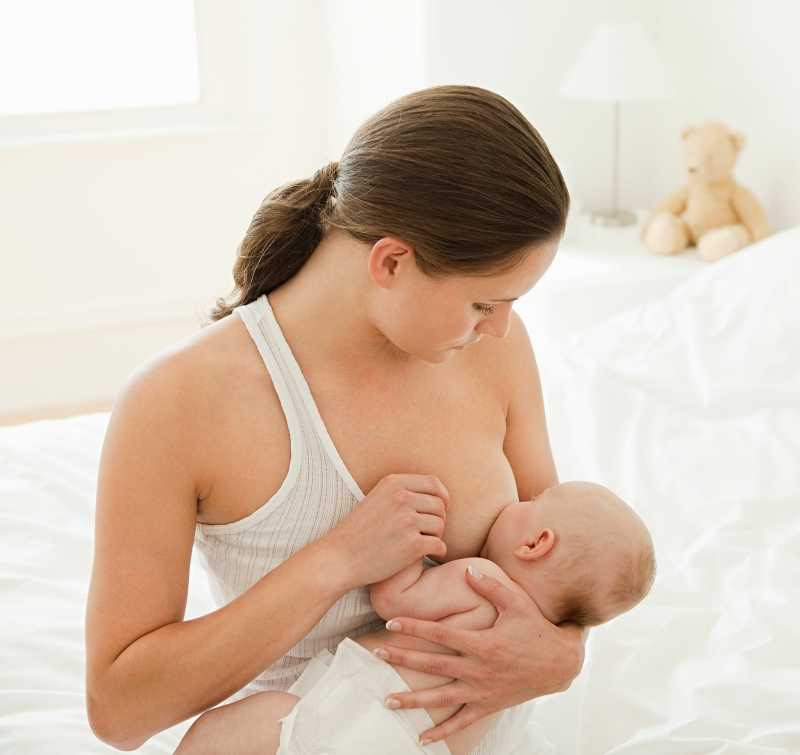
Read more on Better Health Channel website
Breastfeeding | Sydney Children's Hospitals Network
Breastfeeding is not always easy and you may have trouble breastfeeding your baby
Read more on Sydney Children's Hospitals Network website
Breastfeeding Advice For Newborn Babies | Tresillian
When establishing breastfeeding good positioning and attachment are key. Here are some tips from Tresillian to help your breastfeed your newborn.
Read more on Tresillian website
Vasospasm and breastfeeding
Vasospasm affects the flow of milk from the nipple and can be a painful condition for women breastfeeding. Learn about vasospasm and how to relieve the pain.
Read more on Pregnancy, Birth & Baby website
Attachment to the breast | Australian Breastfeeding Association
A baby who attaches well to the breast can help prevent many breastfeeding problems. The well-attached baby causes no nipple pain and drains the breast well. This helps ensure a good milk supply so the baby grows well. In this article you can find out how to attach your baby well using different techniques and holds, including baby-led attachment, the cradle hold, the underarm (football) hold and lying down.
Read more on Australian Breastfeeding Association website
Breast milk expressing - MyDr.com.au
There are a number of reasons why a breast feeding mother might wish to express milk rather than feeding the baby directly from the breast.
Read more on myDr website
Breastfeeding
Breastfeeding is learnt over the first weeks and months of your child’s life. It is a unique and special experience for families as no two mothers or babies are the same.
Read more on Karitane website
Disclaimer
Pregnancy, Birth and Baby is not responsible for the content and advertising on the external website you are now entering.
OKNeed further advice or guidance from our maternal child health nurses?
1800 882 436
Video call
- Contact us
- About us
- A-Z topics
- Symptom Checker
- Service Finder
- Linking to us
- Information partners
- Terms of use
- Privacy
Pregnancy, Birth and Baby is funded by the Australian Government and operated by Healthdirect Australia.
Pregnancy, Birth and Baby is provided on behalf of the Department of Health
Pregnancy, Birth and Baby’s information and advice are developed and managed within a rigorous clinical governance framework. This website is certified by the Health On The Net (HON) foundation, the standard for trustworthy health information.
This site is protected by reCAPTCHA and the Google Privacy Policy and Terms of Service apply.
This information is for your general information and use only and is not intended to be used as medical advice and should not be used to diagnose, treat, cure or prevent any medical condition, nor should it be used for therapeutic purposes.
The information is not a substitute for independent professional advice and should not be used as an alternative to professional health care. If you have a particular medical problem, please consult a healthcare professional.
Except as permitted under the Copyright Act 1968, this publication or any part of it may not be reproduced, altered, adapted, stored and/or distributed in any form or by any means without the prior written permission of Healthdirect Australia.
Support this browser is being discontinued for Pregnancy, Birth and Baby
Support for this browser is being discontinued for this site
- Internet Explorer 11 and lower
We currently support Microsoft Edge, Chrome, Firefox and Safari. For more information, please visit the links below:
- Chrome by Google
- Firefox by Mozilla
- Microsoft Edge
- Safari by Apple
You are welcome to continue browsing this site with this browser. Some features, tools or interaction may not work correctly.
Blood with milk | 74.ru
All newsFamilies from neighboring countries were traveling in a minivan that got into a fatal accident near Chelyabinsk
The Ministry of Health told how many people went to emergency centers in Chelyabinsk because of sleet
A search squad was named in memory of her. The story of Irina Bukhanova, who was killed by her ex-boyfriend - now he can get out on parole
Mobilized from the Chelyabinsk region died a month after being called up for service
The Ministry of Defense explained when the mobilized will receive payments
On the M-5 near Asha, the driver of Renault Logan, who drove into the oncoming lane, died, the accident was caught on video
“They will be brought to trial”. The mobilized stated that they were forced to change the military school under threats
The mobilized stated that they were forced to change the military school under threats
The Ministry of Defense supported the idea of returning primary military training to schools
The authorities decided on a decision regarding two years of military service
A conflict in a minibus, after which a schoolgirl was hospitalized with a head injury, escalated into a criminal case
As a result of a collision between a minivan and a truck near Chelyabinsk, two people were killed, six more were injured
TIN needed? What documents may be required from you when applying for a job? no longer helps: what you need to know about the surgical treatment of obesity0003
Worse than cancer and covid: what Russians most often die of and how to prevent the disease mobilized take part in battles and will they recruit more: NVO news for November 7
The plane flying to Yekaterinburg made an emergency landing in Sochi. There was a depressurization on board
The plane flying to Yekaterinburg suffered a cabin depressurization.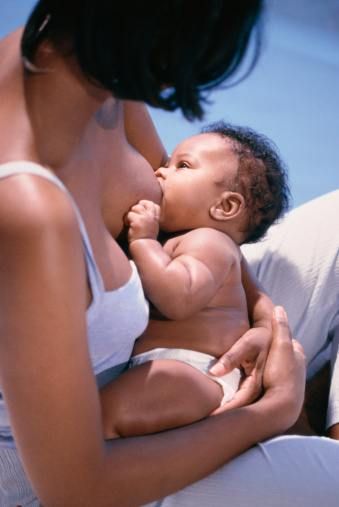 The liner is being prepared for an emergency landing
The liner is being prepared for an emergency landing
The head of the TFR became interested in the incident with the schoolgirl thrown out of the minibus in Chelyabinsk
Putin promised to personally discuss with the Russians the payments to the mobilized
The volunteers from Troitsk who died at the front were the stepfather and father of one girl The mom who constantly yells at her kids (and tips on how to stop yelling)
A sculptor from Chelyabinsk made a monument to the cat Kuza, whose murder was discussed by the flayers throughout the country
Why do subpoenas continue to come after partial mobilization is completed?
In the Chelyabinsk region, volunteers 43 and 50 years old who died at the front said goodbye
Will there be a new set of mobilized? Answered in the State Duma
Chelyabinsk, wounded at work by her ex-husband with a pistol, died two months later in the hospital
The Kremlin told whether negotiations with Ukraine are possible
"My mother-in-law said I was a coward who left my family.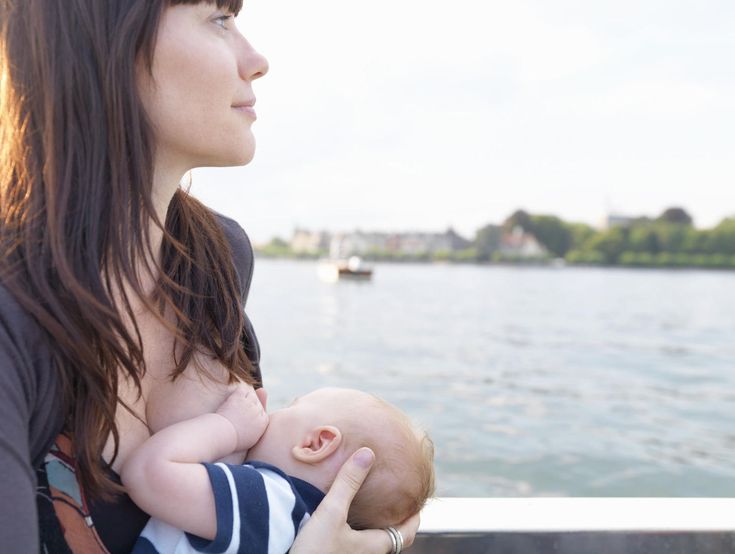 " The story of a father of three children who left for Kazakhstan, but returned to Russia a month later
" The story of a father of three children who left for Kazakhstan, but returned to Russia a month later
A criminal case was opened against a truck driver who caused a fatal accident with a bus near Chelyabinsk
In Magnitogorsk, they said goodbye to the deceased 33-year-old mobilized. He is survived by his wife and daughter
“An ordinary phenomenon in late autumn”: why icy sidewalks negate spending on boulevards and new transport
School desks and Soviet textbooks: a report from the “secret” school that parents preferred to the usual one
A shift worker from a bus that overturned in the Southern Urals told how the accident happened
“There is a solid skating rink in the city”. What was the response of the mayor's office to Chelyabinsk residents who complained about slippery sidewalks
All news
Share
“Girls who have had this: breast milk turns pink, as if mixed with blood. My chest hurts, it feels like a bruise inside, ”JuliGreen writes on the mommy forum. Experienced mothers give her different advice - to apply a cabbage leaf, to do alcohol compresses, and to decant to exhaustion. But only one or two people were advised to see a doctor.
Experienced mothers give her different advice - to apply a cabbage leaf, to do alcohol compresses, and to decant to exhaustion. But only one or two people were advised to see a doctor.
In fact, the problem of getting blood into breast milk is not so rare, it most often occurs in nulliparous women at any stage of lactation. However, the causes of such an unpleasant phenomenon can be different, and only a doctor can determine how dangerous they are for the health of both the mother and the baby, and prescribe adequate treatment.
Everything on the surface
One of the most common causes of bloody milk is a cracked nipple. They are characterized by soreness of the nipples during feeding, which decreases three to seven minutes after it begins. Often such sensations occur in women who have become mothers for the first time, or in those who are breastfeeding for the first time (for example, if the first baby was bottle-fed). The reason is that the skin of the nipples has not yet experienced such an aggressive effect, and now the pain receptors signal an increased load. However, cracked nipples can also occur in women who have been breastfeeding for several months. “Most often this happens due to improper breast care, as a result of which the water-fat balance in the skin is disturbed,” explains dermatologist Irina Aleksandrenko . - It used to be that before each feeding, you should wash your breasts with soap or treat with an alcohol solution, for example, brilliant green. This contributes to the drying of the skin and the appearance of cracks. Today, doctors believe that to maintain a hygienic condition of the breast, it is enough to take a shower once a day, change a bra daily and, in a timely manner, absorb milk pads. If these measures are not enough, then you can moisturize the skin with special creams containing lanolin. “During the first feeding, I suffered terribly from cracked nipples,” shares the experience of a mother of two children Oksana Khorunzhiy . – My mother advised me to use my own milk for breast treatment. After feeding, I squeezed out a few drops of milk and rubbed them on the skin of the chest and left to air dry.
However, cracked nipples can also occur in women who have been breastfeeding for several months. “Most often this happens due to improper breast care, as a result of which the water-fat balance in the skin is disturbed,” explains dermatologist Irina Aleksandrenko . - It used to be that before each feeding, you should wash your breasts with soap or treat with an alcohol solution, for example, brilliant green. This contributes to the drying of the skin and the appearance of cracks. Today, doctors believe that to maintain a hygienic condition of the breast, it is enough to take a shower once a day, change a bra daily and, in a timely manner, absorb milk pads. If these measures are not enough, then you can moisturize the skin with special creams containing lanolin. “During the first feeding, I suffered terribly from cracked nipples,” shares the experience of a mother of two children Oksana Khorunzhiy . – My mother advised me to use my own milk for breast treatment. After feeding, I squeezed out a few drops of milk and rubbed them on the skin of the chest and left to air dry.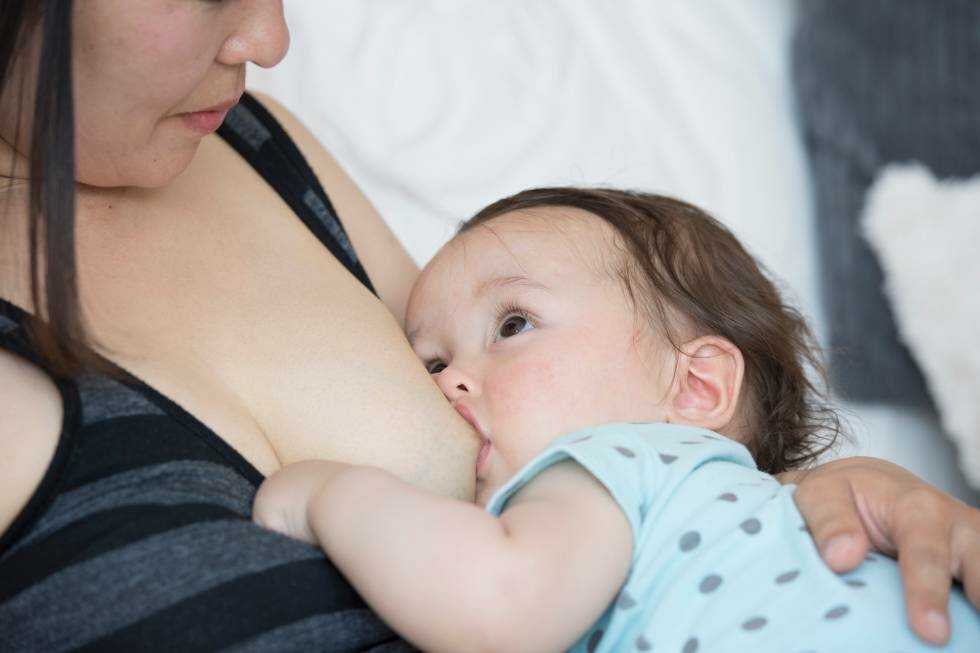 At first, this procedure had to be done not only after feeding, but also between them, and then, when the skin was sufficiently moistened, I limited myself to processing once a day - before going to bed.
At first, this procedure had to be done not only after feeding, but also between them, and then, when the skin was sufficiently moistened, I limited myself to processing once a day - before going to bed.
Delicate vessels
The second reason for the appearance of blood in the milk is an older baby. As a rule, this is observed in mothers who continue to breastfeed their children after a year. “I started weaning my son from the breast at a year and two months, because it became impossible to feed him,” says mom 9 on the forum0089 Ludmila Selivanova . - Milk became less and less, the child sucked more and more. After each feeding, I had the feeling that he pulled all the juices out of the chest. ” With such a strong impact, the capillaries in the milk ducts may not withstand the pressure and burst. As a result, the blood passes into the milk.
It happens that children, on the contrary, refuse to breastfeed early, switching to regular food, and then mothers have to express themselves. An incorrectly adjusted breast pump or excessive finger pressure on the chest also provokes rupture of capillaries and the formation of a hematoma. “Run immediately to the mammologist is not worth it,” advises obstetrician-gynecologist Albina Khaffazova . “You can contact a local gynecologist, a therapist, and even better, pre-make an ultrasound of the mammary glands so that the doctor can immediately prescribe treatment if the need arises.”
An incorrectly adjusted breast pump or excessive finger pressure on the chest also provokes rupture of capillaries and the formation of a hematoma. “Run immediately to the mammologist is not worth it,” advises obstetrician-gynecologist Albina Khaffazova . “You can contact a local gynecologist, a therapist, and even better, pre-make an ultrasound of the mammary glands so that the doctor can immediately prescribe treatment if the need arises.”
A bright distress signal
But if bright red blood comes out of the nipple and there is no soreness or cracks in the nipples, then the woman needs to urgently contact a mammologist or surgeon. Typically, such bleeding occurs with intraductal papilloma - a small benign formation resembling a wart that appears on the inner surface of the milk duct. This papilloma bleeds as it grows or decays. “Usually, there is no palpation or swelling in the chest, sometimes there are no uncomfortable sensations,” comments surgeon Lyubov Trubetskaya . “Most often, with intraductal papilloma, bleeding comes from only one breast and can stop without any treatment, but a woman should still consult a specialist to rule out a much more terrible disease - an intraductal malignant tumor.”
“Most often, with intraductal papilloma, bleeding comes from only one breast and can stop without any treatment, but a woman should still consult a specialist to rule out a much more terrible disease - an intraductal malignant tumor.”
Doctors usually order mammography, ultrasound, and cytology to exclude such a diagnosis. If it shows the need for surgical intervention, then it is better not to delay it. Modern methods of surgery make it possible to remove papillomas and formations in the mammary glands in a minimally invasive way. Until the doctor has made a diagnosis, it is contraindicated to breastfeed the baby, from which blood comes, in order to avoid infection of the child. Milk from this breast must be expressed to maintain lactation, while it is advisable to prefer manual gentle pumping to a breast pump so as not to aggravate the problem.
Inna Miller
Breast is breastfeeding
- Laik3
- Laughter0
- Surprising0
- Anges 0126
- Sright1
SEED WITH PROMETHING? Select a fragment and press Ctrl+Enter
COMMENTS10
Read all comments
What can I do if I log in?
COMMENT RULES
0 / 1400 This site is protected by reCAPTCHA and Google.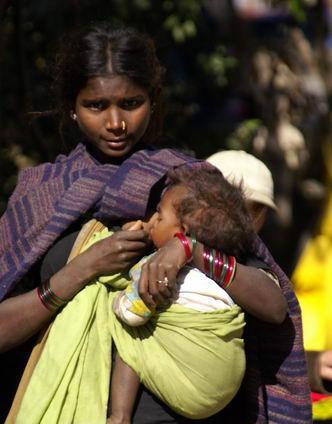 The Privacy Policy and Terms of Use apply.
The Privacy Policy and Terms of Use apply.
Media news2
Media news2
Blood in breast milk - what could it be?
Sometimes breastfeeding mothers notice unusual discharge from the breast during lactation. Such discharge may have a reddish, pinkish, or rusty tint. You should always pay close attention to such secretions, because. they can be a sign of the presence of blood in the milk.
Most often, blood enters the milk from external injuries of the nipple and areola, for example, with deep cracks or abrasions in the nipple area blood often mixes with milk and turns it pink. Sometimes mothers can watch a crack in the nipple bleed and the baby spit up milk with blood.
In this case, the cause of the presence of blood in the milk lies on the surface and usually does not raise questions, but only requires correction of the attachment of the child to the breast and additional treatment of the nipples for the speedy healing of cracks.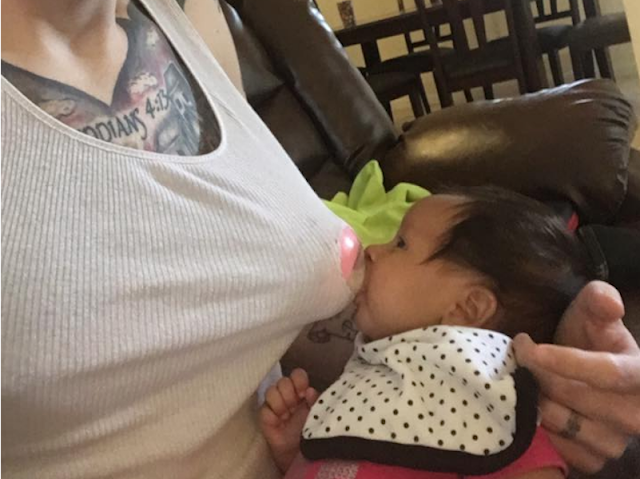
However, there are less obvious causes of blood in the milk when there are no visible lesions on the breast. Different studies of this problem describe different clinical cases, for example, one mother with severely inverted nipples had painless bleeding from the chest after wearing the milk collection pads in late pregnancy. After she reduced the time she wore the braces, the bleeding stopped [2].
Another reason for the appearance of blood in milk can be damage to the capillaries inside the breast tissues due to inaccurate manual expression or improper use of the breast pump [4].
There is also a study that says that the milk of some breastfeeding mothers during the first weeks after childbirth can be similar to rusty water, which can be observed in water pipes that have not been used for a long time. This phenomenon is called "rusty pipe syndrome" . According to researchers, this syndrome occurs more often in primiparous mothers during the early stages of lactogenesis and is most often not associated with any discomfort [3]. In addition, dairy farmers report "rusty" milk from cows that calve for the first time. It is assumed that the reason for this is a slight internal bleeding from edema during the first flush of milk in a cow [4].
In addition, dairy farmers report "rusty" milk from cows that calve for the first time. It is assumed that the reason for this is a slight internal bleeding from edema during the first flush of milk in a cow [4].
O'Callaghan, also a researcher of Rusty Pipe Syndrome, reports 37 clinical cases of its manifestation [5]. The earliest manifestation of the syndrome was noted during the fourth month of pregnancy and in most cases was associated with mechanical compression of the breast during the prenatal period. With this syndrome, blood in the milk may appear in both breasts and disappear, as a rule, within 3-7 days after the start of lactation.
Bright red breast bleeding without sore or cracked nipples indicates that the nursing mother needs to see a doctor (mammologist or surgeon) as soon as possible. First of all, the study is carried out on the subject of intraductal papilloma.
Intraductal papilloma is a small, benign, wart-like growth on the inner surface of the milk duct that may bleed as it grows or decays. Usually, in this case, neither compaction nor swelling is palpated in the chest, and discomfort may be absent. Usually, with intraductal papilloma, bleeding is observed from only one breast. Often, bleeding stops spontaneously without any treatment [2], but nevertheless, a nursing mother should still consult a doctor to identify its causes.
Usually, in this case, neither compaction nor swelling is palpated in the chest, and discomfort may be absent. Usually, with intraductal papilloma, bleeding is observed from only one breast. Often, bleeding stops spontaneously without any treatment [2], but nevertheless, a nursing mother should still consult a doctor to identify its causes.
Cytology, mammography, and ultrasound may be helpful in identifying the cause of blood in the milk in the absence of sore or cracked nipples [1]. If, according to the results of the study, there is a need for surgical intervention, the doctor will remove the formation inside the duct. The mass will then be histologically examined to confirm that it is an intraductal papilloma and not something more serious such as intraductal malignancy .
In a situation of breast bleeding of unknown origin, a breastfeeding mother can gently pump her breast to maintain lactation until the cause of the bleeding is identified.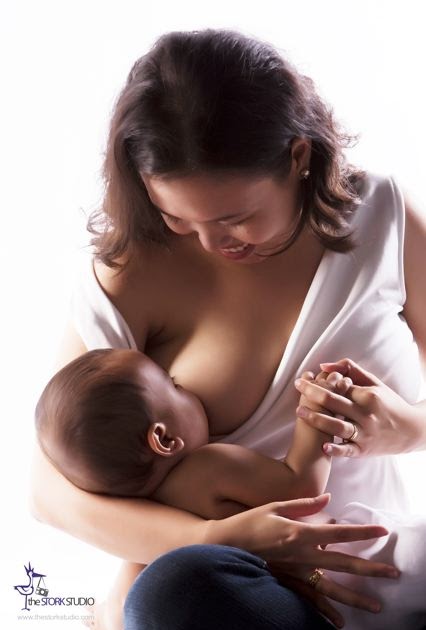 It is advisable to opt for manual pumping and carefully follow the correct gentle pumping technique, as rough pumping or pumping can exacerbate the problem.
It is advisable to opt for manual pumping and carefully follow the correct gentle pumping technique, as rough pumping or pumping can exacerbate the problem.
In any case, if a mother notices that a child has accidentally received milk with a small amount of blood, do not panic - the baby will not be harmed by small amounts of serous-hemorrhagic discharge [2]. A relatively large amount of blood in the milk can lead to regurgitation of milk with blood in the baby.
Call a consultant Have questions? +7 (812) 956-3-954
Literature:
Literature:
- Berens P.D. , Prenatal, intrapartum, and postpartum support of the lactating mother. In: Schanler, RJ, ed. Breastfeeding, Part II: the management of breastfeeding, Pediatric Clin No Americal 48:365–75, 2002.
- Breastfeeding and Human Lactation (Jones and Bartlett Series in Breastfeeding/Human Lactation) by Jan Riordan Publisher: Jones and Bartlett Publishers, 3rd Edition, 2004.
